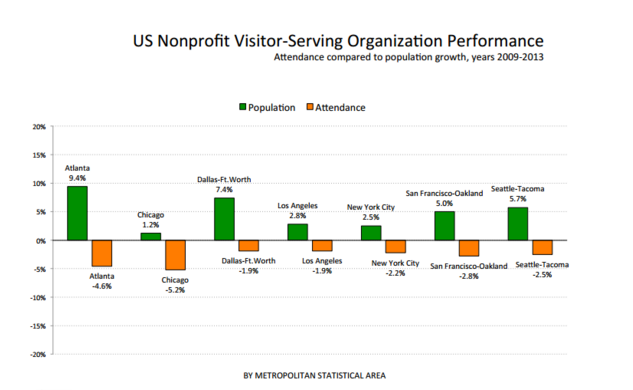How Cultural Institutions Are Changing in the Digital Age
Cultural institutions — like museums, educational centers, and historical societies — have traditionally relied heavily on on-site traffic for growth. However, with upwards of 50% of U.S. schools canceling planned field trips and historical information easily accessible online, cultural institutions are actively exploring new ways to reach learners digitally.
In light of the decreasing rates of visitor attendance, cultural institutions have moved toward two distinct strategies — creating stronger online presences and presenting a more captivating digital experience in-person.
Creating A Stronger Online Presence
Works & Process is a performing-arts series at the Guggenheim whose online presence is one of the more developed among the museum industry.
“By having an online forum where, not only are we streaming the video, but we’re allowing a chat to happen simultaneously, it’s an extension of the discussion going on inside the museum auditorium into the online world,” said “Works & Process” general manager Duke Dang.
The decision to use the web to present the Guggenheim’s content to the world is part of a greater agenda for the museum. Museum executives said their audience demographic was largely international, so offering the displays online helped extend the Guggenheim brand to those who couldn’t be around physically.
The digital age has also created avenues for strictly online organizations. Take the Warsaw Risingsite for example, a group whose digital display ventures into the history of the Warsaw Uprising and its effect internationally and domestically.
Miranda Carroll of the LACMA told ABC, ‘We were the first museum to use Snapchat, and we now have over 400,000 users. It brings people to the museum, because they want to hang out and take photos there.’
The Metropolitan Museum of Art is one of the latest institutions to house its own digital media department. The department “leads the creation, production, presentation, and dissemination of multimedia content to support the viewing and understanding of the Met’s collection and exhibitions, both within the galleries and online.”
The need for a strong online presence is important not only to attract new visitors but also to extend museum information to new platforms and offer global accessibility.
The In-Person Digital Experience

It’s no longer enough to line museum walls with old exhibits, especially with the increasing competition to fight for both on-site and online traffic from viewers. Cultural institutions are becoming more of an experience which has led the push for more of the digital aspect on-site.
Learning centers are finding new ways to attract local students through updated technology and hardware so that on-site time is just as enjoyable as it is informative. Many museums now offer mobile apps with audio tours, push notifications for gallery changes, and a searchable database of art right in your fingertips.
Innovative organizations today are supplementing their exhibits with new technologies to blend the online and offline worlds. The Huntington recently installed iPads with relevant collection information while giant touch tables in the “Mummies” exhibition at Museum of Mediterranean and Near Eastern Antiquities allow guests to unwrap mummies virtually, one layer at a time.
The digital age has created new avenues for cultural institutions. The advancements of technology and digital media has pushed these types of organizations to establish themselves online and create innovative digital presences on-site in order to stay relevant and engaging.
